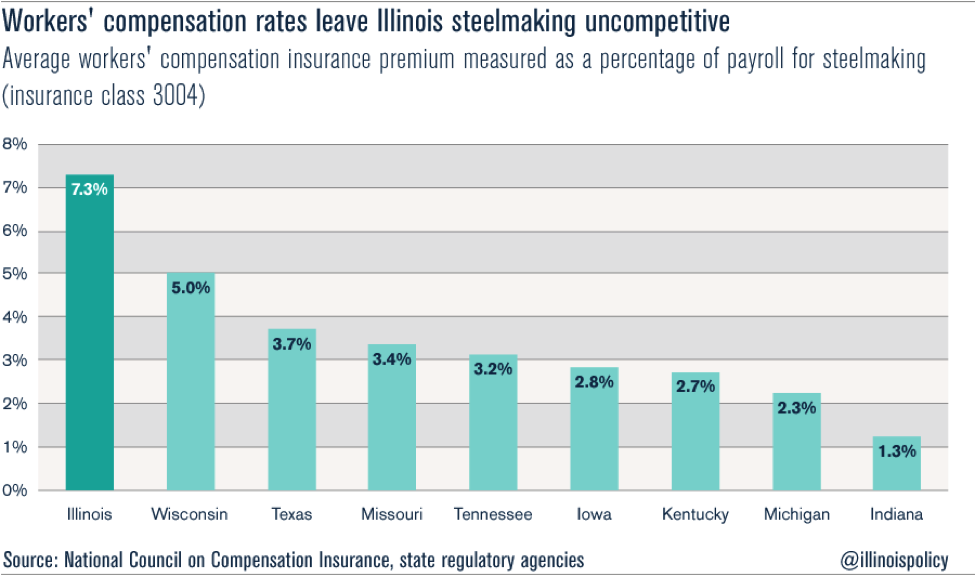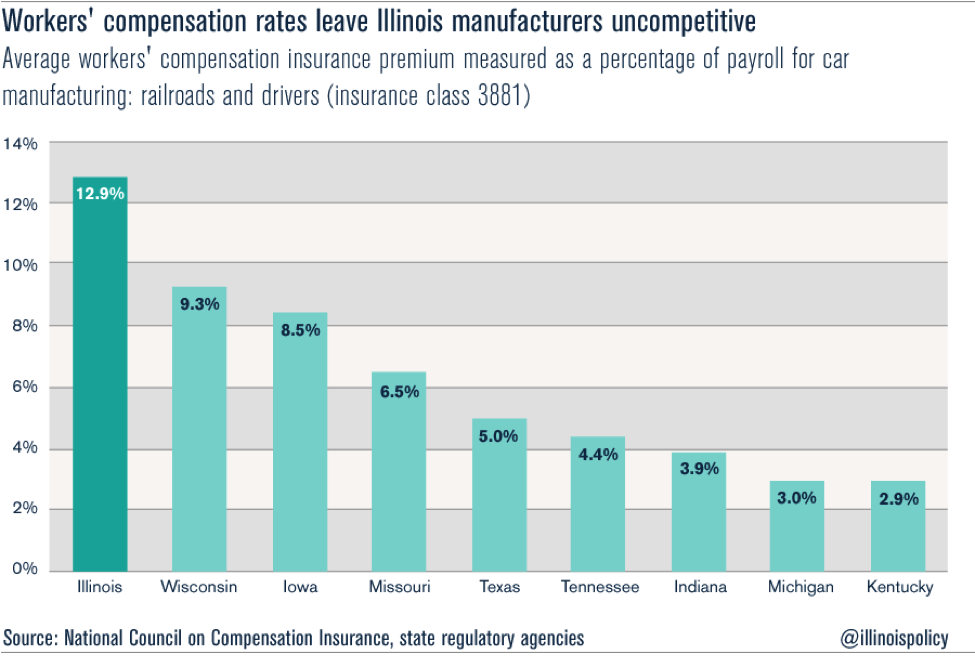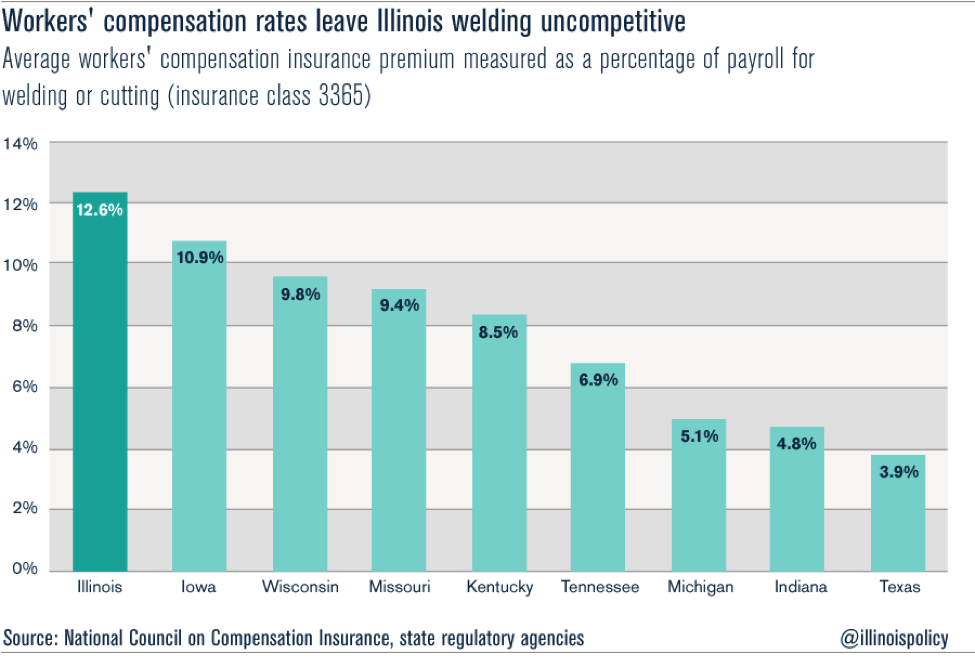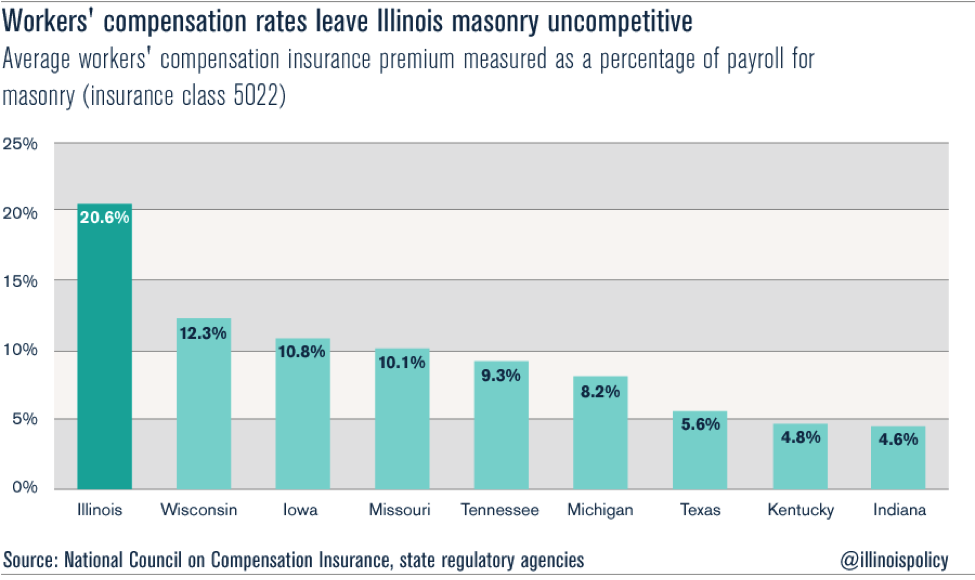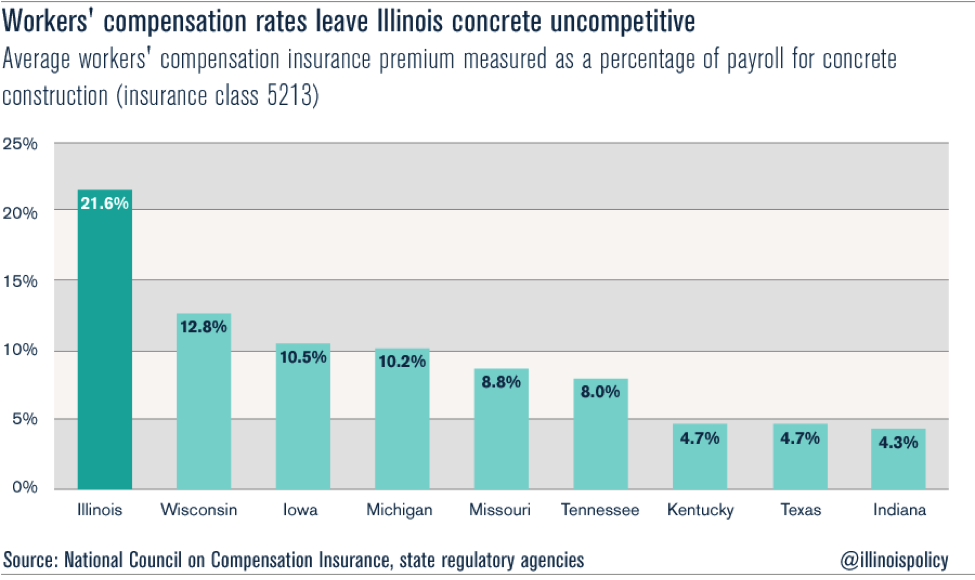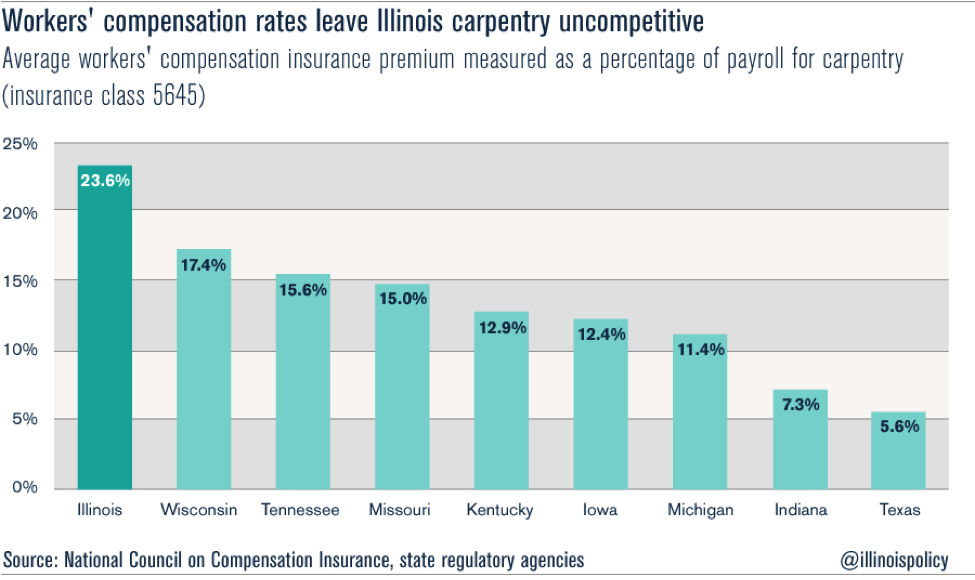Illinois’ broken workers’ compensation system
Comparisons with peer states show a badly distorted workers’ compensation system in Illinois.
Illinois’ workers’ compensation system crushes blue-collar industries, forcing them to leave the state to stay in business. Leaders across Illinois from the CEO of Caterpillar to Attorney General Lisa Madigan have repeatedly pointed out that Illinois’ system is broken and far out of line with peer states. Systemic reform is needed, not more of the soft-serve reform of 2011.
To investigate this issue further, the Illinois Policy Institute received price quotes for workers’ compensation insurance rates across the manufacturing, construction and transportation sectors in Illinois and competing states. The price quotes are measured as a percentage of total payroll wages. These results show that workers’ compensation is a major reason why blue-collar jobs are fleeing Illinois, with blue-collar workers following in droves.
The data illustrate that Illinois businesses have to pay a dramatic premium to protect themselves against wrongful lawsuits, which drives up local costs far beyond the costs in other states.
Manufacturing
Illinois has had a year full of losses in steel production. Workers’ compensation insurance for steel fabricators in Illinois is double and triple the rate of surrounding states. The same is true for steelmakers, where the insurance rate is 7.3 percent of payroll in Illinois, compared with 1.3 percent in Indiana, 2.3 percent in Michigan and 3.7 percent in Texas.
Car manufacturing for railroads and drivers is another example. The insurance premium in Illinois is 12.9 percent of payroll, compared to 3.9 percent in Indiana and 3 percent in Michigan. That means Illinois manufacturers are paying as much as 10 percent of payroll more than neighboring states on workers’ compensation regulatory costs.
Illinois doesn’t come out quite so badly in welding, but is still the least competitive of peer states. And perhaps most importantly, Illinois’ most industrialized neighbors, Michigan and Indiana, provide savings of nearly 8 percent of payroll compared to Illinois for welders.
Construction
Construction occupations in Illinois see even more outsized distortions in insurance rates, measured as a percentage of payroll. For masonry, Illinois’ workers’ compensation cost is more than four times the rate of Indiana. The regulatory cost in the Land of Lincoln is 15 percent of payroll wages higher than in Indiana and Texas, and 12 percent of payroll above Michigan.
For concrete construction workers, the distortions are even worse. Illinois’ rate is more than four times as high as Indiana and Texas, and more than double that of Michigan.
Finally, for carpentry, Illinois’ regulatory cost is triple Indiana’s, quadruple Texas’ and double most other states. That comes to an Illinois premium equal to an additional regulatory cost of 16 percent of payroll compared with Indiana, 12 percent of payroll compared with Michigan and 18 percent of payroll compared with Texas.
Transportation
Truck driving is one of the most common occupations in the U.S., providing a middle-class living for 3.5 million American workers. But Illinois makes it costly to operate a transportation business. Illinois’ workers compensation rates for long-distance trucking are more than double those of Indiana, Michigan and Texas, putting Illinois at a deficit of roughly 8 percent of payroll compared to all three states.
The difference is more extreme for parcel or package delivery, meaning workers for Fed-Ex or UPS, for example. Illinois’ rates are triple Indiana’s, double Michigan’s and quadruple Texas’, leaving Illinois employers at a comparative deficit of 16 percent, 12 percent and 18 percent of payroll wages, respectively.
Finally, even for occupations like chauffeurs and messengers, Illinois’ workers compensation system takes a big bite, with premiums coming in at triple Indiana’s rates and more than double the rate of most other peer states.
These comparisons show how far out of line Illinois’ workers compensation system is, which nearly everyone in the state seems to understand except for the trial lawyers who benefit from the system and the legislative leaders who protect the trial lawyers.
Major employers across the state, Gov. Bruce Rauner and even Attorney General Lisa Madigan are all singing the same tune about the need for structural reform, which Rauner has proposed legislatively in House Bill 4223 and Senate Bill 994. Not only is this legislation a key part of Rauner’s “Turnaround Agenda,” it is a key component to restoring Illinois’ industrial backbone and blue-collar industries, so that the middle class can grow in Illinois again.

